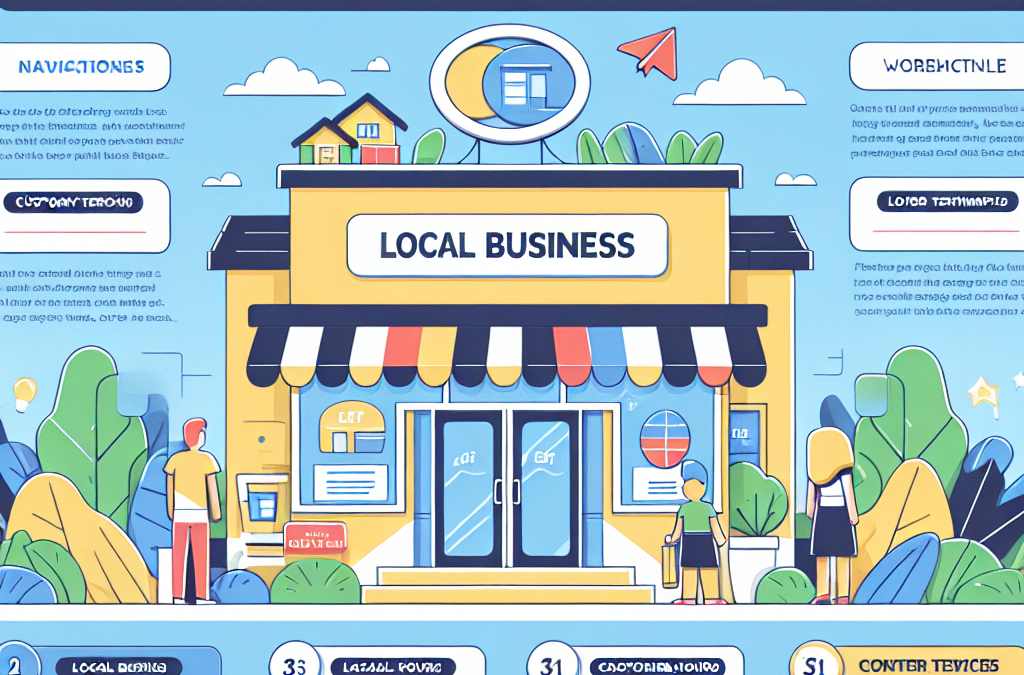Understand Your Target Audience
Identifying Your Niche
Before diving into the nitty-gritty of SEO, I always tell people the first step is knowing who you’re talking to. Understanding your target audience is like finding the right key for a lock—it opens the door to effective communication. Ask yourself what problems your potential customers face and how your business can solve them.
Once you’ve identified your audience, create personas. These are semi-fictional characters that embody the traits of your real clientele. By painting detailed portraits of these folks, you can tailor your content to directly address their needs and desires, improving your website’s engagement and conversion rates.
Don’t forget to consider local nuances. Local slang, cultural references, and even the preferred communication style can vary greatly. Gaining insight into your audience means you’ll be speaking their language—a vital step for connecting with local customers.
Conduct Comprehensive Market Research
Market research isn’t just for big players; it’s crucial for small businesses, too. I like to start with a combination of online surveys and social media polls. Based on my experiences, using tools like Google Trends can also provide insights into what your audience is currently interested in.
Listening to customer feedback is like gold! Check out online reviews and social media comments. They’ll give you a sense of what people love about your business and what needs a little tweaking. By understanding market demands, you can stay ahead of trends and better position your offerings.
Lastly, don’t shy away from analyzing your competitors. What are they doing right? Where are their weaknesses? Learning from others can save you a ton of time and trial-and-error, letting you hit the ground running with your SEO strategy.
Choosing the Right Keywords
Now that you’re clear on your audience, it’s time to pick the right keywords. Keyword research is all about finding terms and phrases that your potential customers are actually typing into search engines. Trust me, it makes a world of difference!
There are various tools at your disposal for this. Google Keyword Planner is a classic option, and I’ve also found Ahrefs and SEMrush to be super helpful. Look for keywords with high search volumes and low competition; these are usually the golden nuggets.
In your website content, be sure to sprinkle these keywords naturally. Stuffing them in awkwardly can make your content read like a robot wrote it. Aim for a seamless integration that keeps your language fluid and engaging.
Create a User-Friendly Website Design
Responsive Design Matters
I can’t stress enough how important it is for a website to look great on all devices. With more people browsing on mobile than ever before, having a responsive design isn’t just a nice-to-have—it’s a must. You want your site to look sharp whether someone’s on a phone or a desktop.
To achieve this, I always recommend using a website builder that offers responsive templates. This takes a lot of stress off your plate. Just remember to test your site on different devices after you set it up to ensure everything displays correctly.
A responsive design not only improves user experience but also boosts your SEO rankings. Google takes mobile-friendliness into account when ranking websites, so this step is critical for local search success!
Fast Loading Times
No one likes waiting for a website to load—especially me! A slow site can send potential customers packing. To optimize your load times, I suggest compressing images and minimizing the use of heavy scripts. You can use tools like Google PageSpeed Insights to see how your site stacks up.
Another trick I learned is to leverage browser caching. By storing static versions of your website files, you can significantly reduce loading times for repeat visitors. Who doesn’t love a fast and seamless experience, right?
Remember, a speedy website improves user experience and can directly affect your bounce rate, enhancing your chances of ranking higher in search engines. So, speed it up!
Easy Navigation
Think of your website as a journey for your visitors. I always aim to make it as easy as possible for visitors to find what they’re looking for. A clean, intuitive navigation structure is essential. Start by categorizing your website pages logically, so users can find their way around without getting lost.
Using clear menus and breadcrumbs can guide your visitors through the site smoothly. If you overload them with choices right off the bat, they’re likely to opt-out and go elsewhere. Keep it simple, let them focus on what really matters.
Don’t forget to include a search function. Many users prefer to search for specific information directly. By offering this feature, you make it a hell of a lot easier for them to access your services or products.
Optimize Your Content for Local SEO
Utilizing Local Keywords
Once you’ve set the stage, it’s time to get local with your keywords. Adding city names and regional phrases can give you that local edge when it comes to SEO. I’ve found that specific keywords can drive customers straight to your business, which is the ultimate goal.
Your website content should flow naturally with these local keywords sprinkled throughout. Create content that resonates with local interests and culture. For example, if you’re a local café, talk about community events or seasonal menus that tie into local happenings.
Don’t forget about the importance of location-based long-tail keywords. They’re easier to rank for and often lead to higher conversion because they match users who have a specific intent.
Claim and Optimize Your Google Business Profile
If you haven’t already claimed your Google Business Profile, it’s like leaving money on the table. This is one of the best ways to enhance your local SEO. Ensure that your business information is accurate, complete, and frequently updated.
Adding photos and responding to reviews can create a positive impression. Let your personality shine through in your responses. Customers appreciate businesses that engage and interact.
Also, make sure to regularly post updates and offers on your profile. This can lead to higher engagement rates and even push you higher in local search results. It’s free advertising, and who doesn’t want that?
Encourage Local Reviews
Customer reviews not only build trust, but they also play a significant role in local SEO. I always encourage my clients to ask satisfied customers to leave positive reviews. You can even make it easy for them by providing links to your Google Business Profile or social media pages.
Responding to reviews, both good and bad, can showcase your business’s commitment to service. Show potential customers that you care about their feedback and are willing to engage with them. It adds a human touch that many people appreciate.
Lastly, remember to showcase these testimonials on your website. Highlighting positive reviews not only enhances your credibility but can also influence potential customers who are learning about your business for the first time.
Monitor and Adjust Your SEO Strategy
Use Analytics Tools
Keeping an eye on your SEO efforts is crucial. There are various analytics tools out there that can help you track the performance of your website. Tools like Google Analytics and Google Search Console provide invaluable insights into how people are interacting with your site.
Look for metrics like organic traffic and bounce rates to see what’s working and what’s not. This will inform you where to pivot your strategy. The digital landscape is always changing, and so should your approach to SEO.
Regularly reviewing your analytics is a habit I recommend every business owner get into. Set aside time each month to analyze your data, and you’ll be better equipped to make informed decisions about your content and marketing strategies.
Stay Updated with SEO Trends
The world of SEO is constantly evolving, and it’s essential to stay informed about the latest trends and algorithm updates. Follow leading SEO blogs, participate in forums, and attend webinars to stay ahead of the game. Trust me, it’s worth the effort!
By keeping abreast of changes, I’ve been able to adjust my strategies quickly, which has allowed me to maintain and even improve my search engine rankings. Consider subscribing to newsletters from SEO experts or joining online communities for ongoing education.
Integrating new strategies can give you a competitive edge, so don’t fall behind. The landscape is competitive, and those who adapt quickly are the ones who thrive.
Experiment and Adapt
Lastly, never be afraid to try new things. SEO is as much about experimentation as it is about following guidelines. Set up A/B tests to see how different content formats, designs, or calls to action perform, and adjust accordingly based on your findings.
Sometimes what you think will resonate doesn’t, and other times, a simple tweak makes all the difference. Stay curious, and be willing to adapt your strategies based on what you learn.
Remember, SEO isn’t a one-and-done situation. It’s an ongoing process, and being committed to refining your approach will ultimately lead to greater success.
FAQs
1. How important is local SEO for my business?
Local SEO is incredibly important, especially if your business serves customers in a specific geographic area. It helps ensure that your business appears in local search results, which is where many customers look for services and products.
2. What role do keywords play in SEO?
Keywords are critical because they are what users type into search engines. Using relevant keywords in your content helps search engines understand your offerings and can propel your website higher in the search results.
3. How can I improve my website loading speed?
You can improve your website’s loading speed by optimizing images, utilizing browser caching, and minimizing heavy scripts. Tools like Google PageSpeed Insights can help you monitor loading times and make necessary adjustments.
4. Should I respond to negative reviews?
Absolutely! Responding to negative reviews shows that you value customer feedback and are willing to resolve issues. How you address these reviews can greatly impact your business’s reputation.
5. How often should I update my website content?
It’s a good practice to update your website content regularly—ideally, aim for fresh content at least monthly. Regular updates show search engines that your site is active and can improve your chances of ranking higher.


